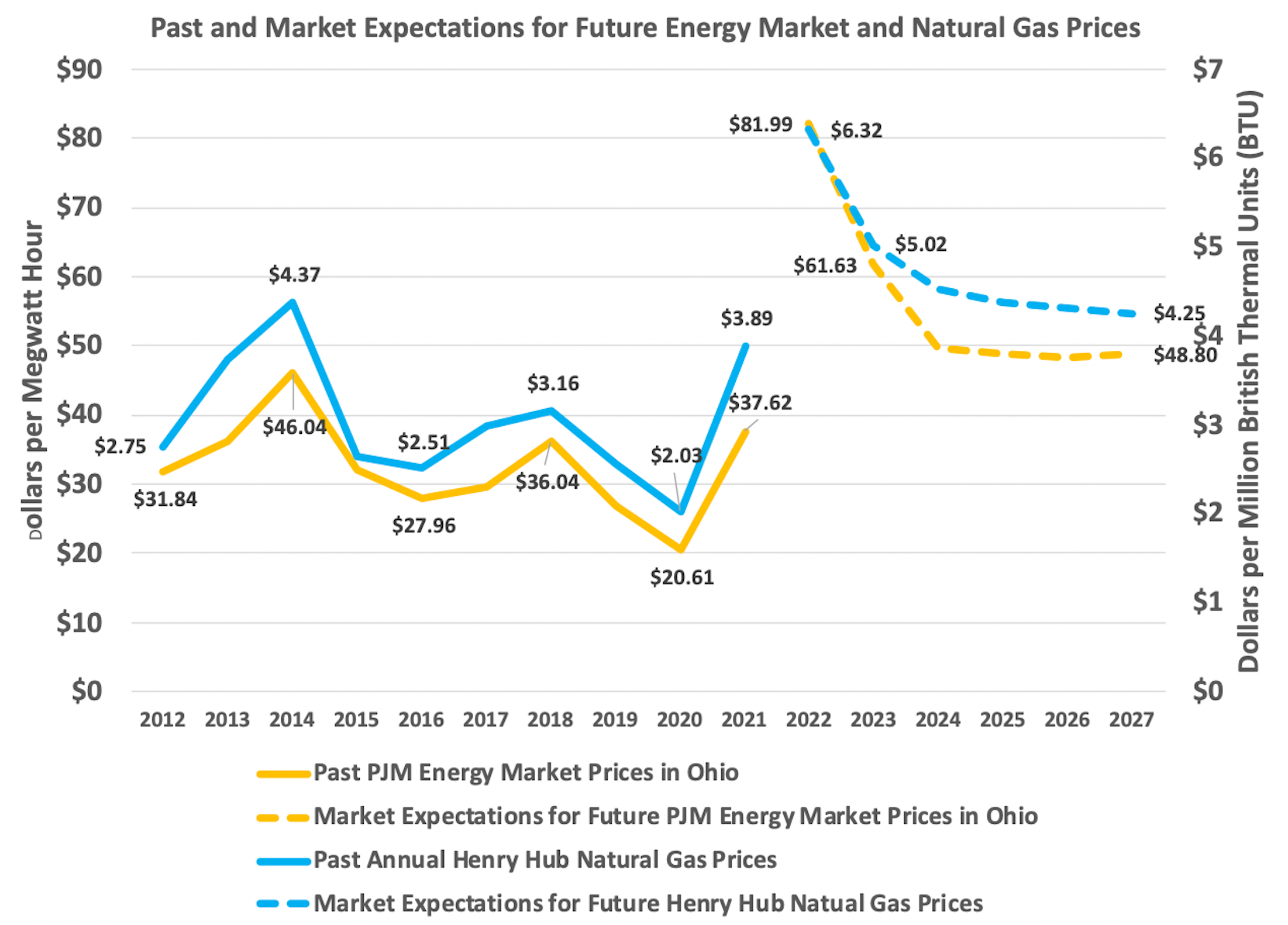Price of buying power from Prairie State coal plant will remain a bad deal for Cleveland Public Power customers
Download PDF

Price of Buying Power from Prairie State Coal Plant Will Remain a Bad Deal for Cleveland Public Power Customers, Despite Short-Term Market Variations
The Prairie State Energy Campus, a coal-fired power plant in Southern Illinois, has generated electricity at a price considerably higher than the market ever since it opened in 2012. This means that Cleveland Public Power, along with the 200 other communities who have contracts to purchase power from this plant, have been over-paying for the price of electricity for a decade.
The cost of power from Prairie State is currently lower than the market price of power, however, and may remain so for another year or so. This it not because Prairie State has become less expensive to own and operate, but is the result of an abnormal sequence of events that have temporarily driven market prices higher. Natural gas prices, which drive the market price, have risen recently as a result of the emergence from the pandemic and because of Russia’s invasion of Ukraine.
The following figure shows the close relationship between natural gas prices and regional energy market prices (the regional market in much of the eastern part of the U.S. is known as PJM). Market expectations are that the prices of buying power from the regional markets will decline starting in the near future, as depicted below.

The figure below compares the cost of power from the Prairie State plant with the market price of power. It shows that the current situation – where Prairie State is less expensive than the market – is an anomaly.
IEEFA expects that the cost of power from Prairie State will continue to be uneconomic for Cleveland and CPP’s ratepayers in coming years and that by the year 2027, Cleveland ratepayers will have paid more than $60 million more for the power from Prairie State since it started operations in 2012 than it would have cost CPP to purchase the same power from the wholesale PJM markets.

NOTE: The price of power paid by AMP communities for Prairie State power was derived from information received through a public records request in Bowling Green, Ohio. Previous research shows that AMP charges the same rates to all of its member communities, and the data is thus applicable to Cleveland. However, it would improve the discourse on this issue for Cleveland Public Power to make its own data on power purchase prices available to Cleveland City Council and the public.















